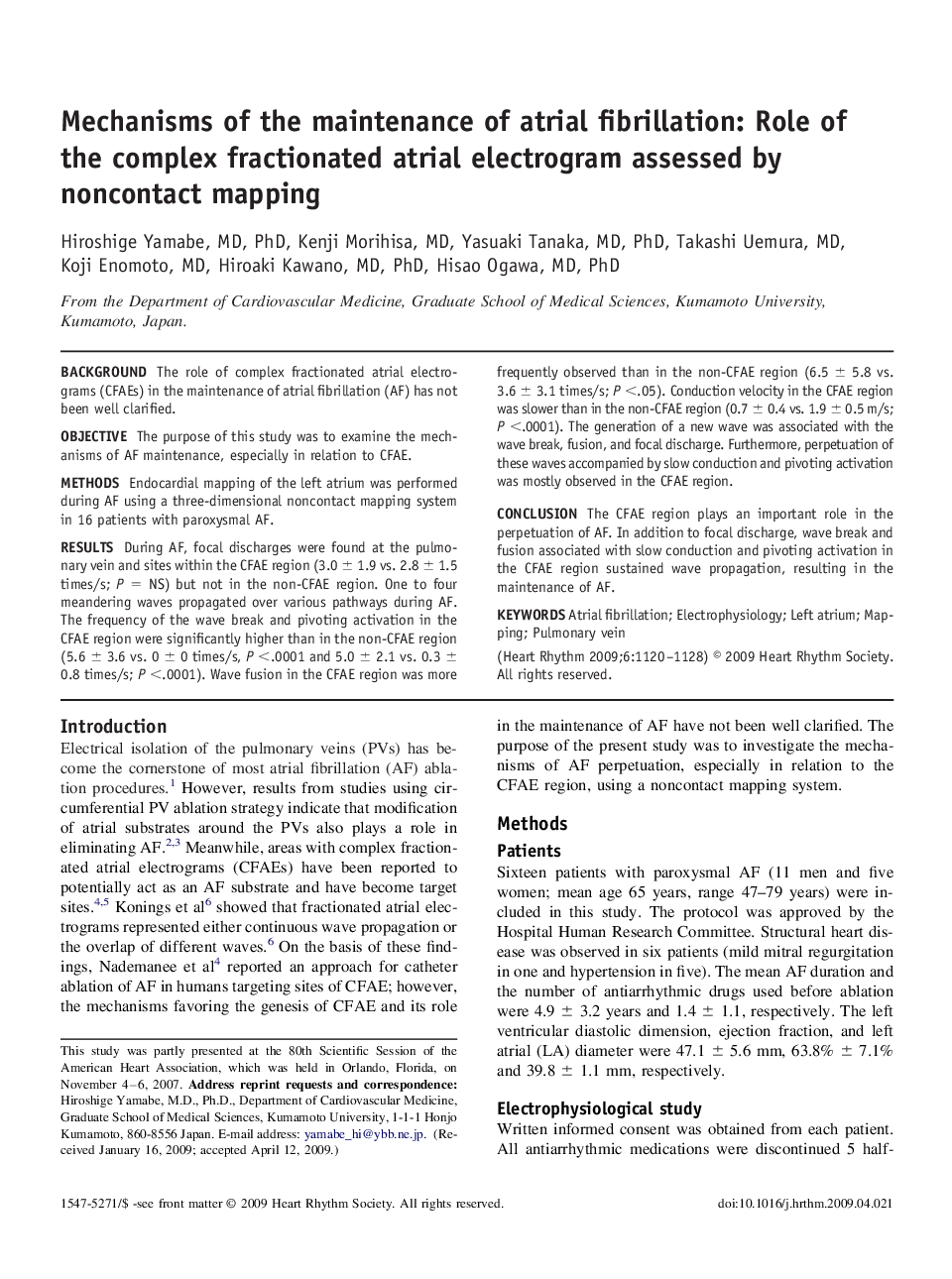| Article ID | Journal | Published Year | Pages | File Type |
|---|---|---|---|---|
| 2924006 | Heart Rhythm | 2009 | 9 Pages |
BackgroundThe role of complex fractionated atrial electrograms (CFAEs) in the maintenance of atrial fibrillation (AF) has not been well clarified.ObjectiveThe purpose of this study was to examine the mechanisms of AF maintenance, especially in relation to CFAE.MethodsEndocardial mapping of the left atrium was performed during AF using a three-dimensional noncontact mapping system in 16 patients with paroxysmal AF.ResultsDuring AF, focal discharges were found at the pulmonary vein and sites within the CFAE region (3.0 ± 1.9 vs. 2.8 ± 1.5 times/s; P = NS) but not in the non-CFAE region. One to four meandering waves propagated over various pathways during AF. The frequency of the wave break and pivoting activation in the CFAE region were significantly higher than in the non-CFAE region (5.6 ± 3.6 vs. 0 ± 0 times/s, P <.0001 and 5.0 ± 2.1 vs. 0.3 ± 0.8 times/s; P <.0001). Wave fusion in the CFAE region was more frequently observed than in the non-CFAE region (6.5 ± 5.8 vs. 3.6 ± 3.1 times/s; P <.05). Conduction velocity in the CFAE region was slower than in the non-CFAE region (0.7 ± 0.4 vs. 1.9 ± 0.5 m/s; P <.0001). The generation of a new wave was associated with the wave break, fusion, and focal discharge. Furthermore, perpetuation of these waves accompanied by slow conduction and pivoting activation was mostly observed in the CFAE region.ConclusionThe CFAE region plays an important role in the perpetuation of AF. In addition to focal discharge, wave break and fusion associated with slow conduction and pivoting activation in the CFAE region sustained wave propagation, resulting in the maintenance of AF.
